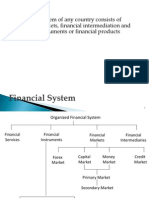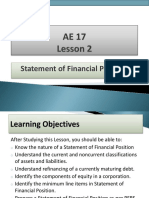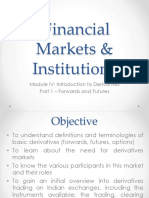0% found this document useful (0 votes)
13 views12 pagesConcise Project Pointers
The document provides a comprehensive study of financial markets, detailing their functions, classifications, and key components such as the money and capital markets. It explains how financial markets facilitate capital flow, price discovery, and liquidity, while also highlighting the roles of various participants and instruments. This knowledge is essential for understanding the dynamics of economic growth and the efficient allocation of resources.
Uploaded by
Sourish DuttCopyright
© © All Rights Reserved
We take content rights seriously. If you suspect this is your content, claim it here.
Available Formats
Download as DOCX, PDF, TXT or read online on Scribd
0% found this document useful (0 votes)
13 views12 pagesConcise Project Pointers
The document provides a comprehensive study of financial markets, detailing their functions, classifications, and key components such as the money and capital markets. It explains how financial markets facilitate capital flow, price discovery, and liquidity, while also highlighting the roles of various participants and instruments. This knowledge is essential for understanding the dynamics of economic growth and the efficient allocation of resources.
Uploaded by
Sourish DuttCopyright
© © All Rights Reserved
We take content rights seriously. If you suspect this is your content, claim it here.
Available Formats
Download as DOCX, PDF, TXT or read online on Scribd
/ 12






















































































